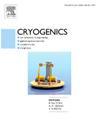Deep learning-based super-resolution reconstruction model for cavitation images in cryogenic flow fields
IF 2.1
3区 工程技术
Q3 PHYSICS, APPLIED
引用次数: 0
Abstract
Obtaining cavitation images of cryogenic fluid flow fields with high temporal and spatial resolution has important scientific value for revealing the mechanism of cryogenic cavitation. This study develops a super-resolution (SR) reconstruction model for cryogenic cavitation flow fields based on deep learning architectures (SRCNN, SRResNet, SRGAN, SwinIR) trained on the datasets obtained from Venturi tube liquid nitrogen (LN2) cavitation flows. Results show that the proposed model achieves ×4 and ×8 spatial resolution enhancement of the cavitation images, thus restoring flow field details well. By analyzing the performance of the model under different pressure ratios Pr inside and outside the dataset, and combining it with the convergent-divergent nozzle LN2 flow field data for verification, it is found that the proposed model can accurately recover fine cavitation flow features from low-resolution inputs while maintaining the temporal coherence and exhibiting good generalization across operational conditions. Quantitative analysis shows that the model based on SwinIR performs better in peak signal-to-noise ratio (PSNR), structural similarity index measure (SSIM), and image standard deviation metrics, maintaining robustness even in severe cavitation information loss. The proposed method provides an effective SR analysis tool for cavitation experiments and has important application value for exploring the cryogenic cavitation mechanism.
基于深度学习的低温流场空化图像超分辨重建模型
获取具有高时空分辨率的低温流体流场空化图像对于揭示低温空化机理具有重要的科学价值。本研究基于深度学习架构(SRCNN、SRResNet、SRGAN、SwinIR),在文图里管液氮(LN2)空化流数据集上进行训练,建立了低温空化流场的超分辨率(SR)重建模型。结果表明,该模型对空化图像的空间分辨率提高了×4和×8,较好地还原了流场细节。通过分析数据集内外不同压力比Pr下模型的性能,并结合收敛-发散喷嘴LN2流场数据进行验证,发现该模型能够在保持时间相干性的同时,从低分辨率输入中准确恢复精细的空化流动特征,并具有良好的跨工况泛化能力。定量分析表明,基于SwinIR的模型在峰值信噪比(PSNR)、结构相似度指标(SSIM)和图像标准差指标上表现较好,即使在严重的空化信息丢失情况下也能保持鲁棒性。该方法为空化实验提供了有效的SR分析工具,对探索低温空化机理具有重要的应用价值。
本文章由计算机程序翻译,如有差异,请以英文原文为准。
求助全文
约1分钟内获得全文
求助全文
来源期刊

Cryogenics
物理-热力学
CiteScore
3.80
自引率
9.50%
发文量
0
审稿时长
2.1 months
期刊介绍:
Cryogenics is the world''s leading journal focusing on all aspects of cryoengineering and cryogenics. Papers published in Cryogenics cover a wide variety of subjects in low temperature engineering and research. Among the areas covered are:
- Applications of superconductivity: magnets, electronics, devices
- Superconductors and their properties
- Properties of materials: metals, alloys, composites, polymers, insulations
- New applications of cryogenic technology to processes, devices, machinery
- Refrigeration and liquefaction technology
- Thermodynamics
- Fluid properties and fluid mechanics
- Heat transfer
- Thermometry and measurement science
- Cryogenics in medicine
- Cryoelectronics
 求助内容:
求助内容: 应助结果提醒方式:
应助结果提醒方式:


